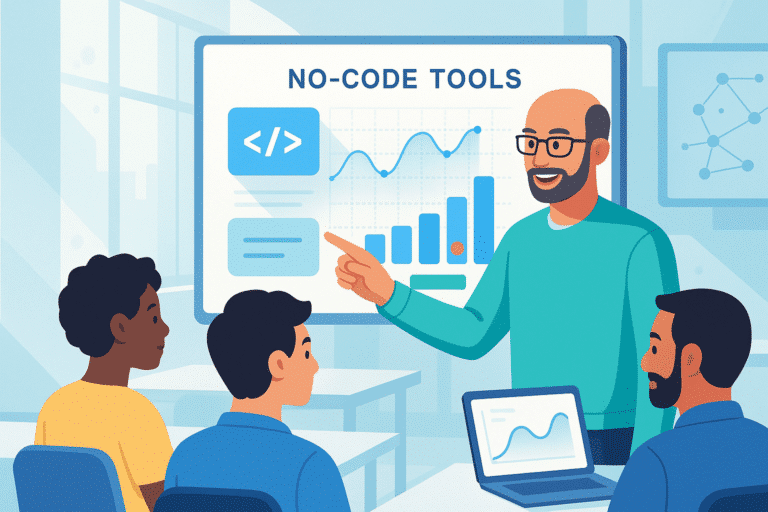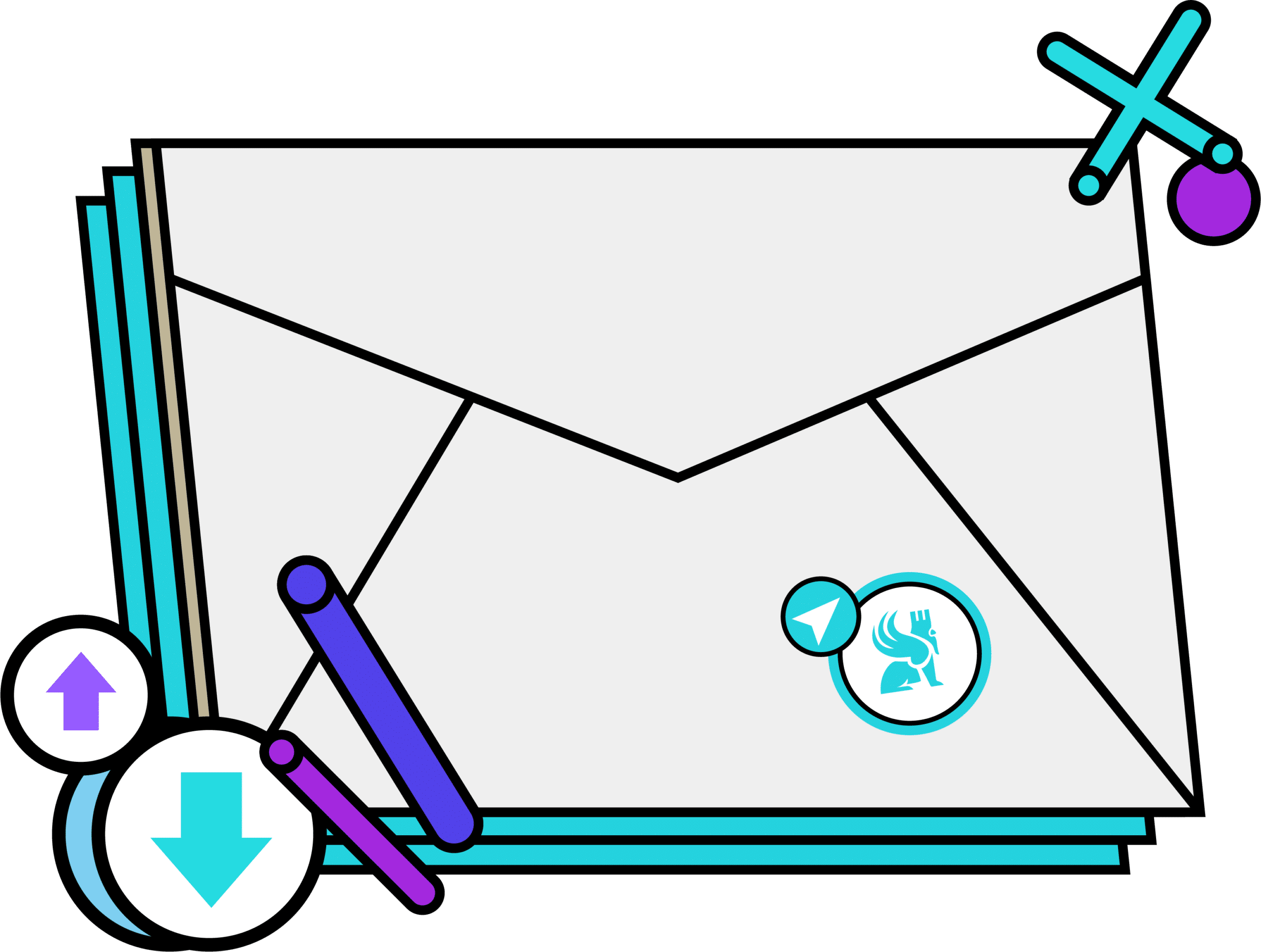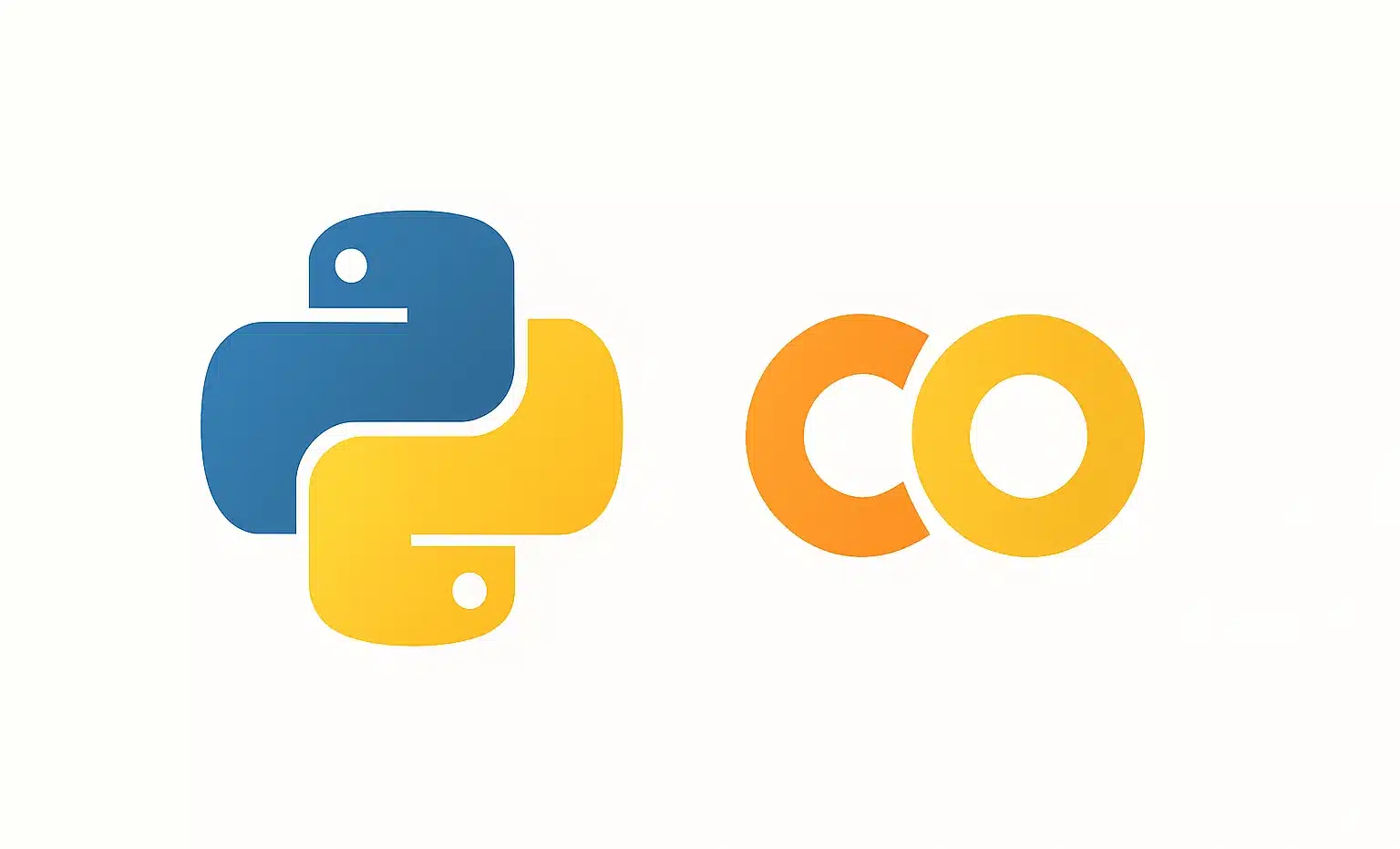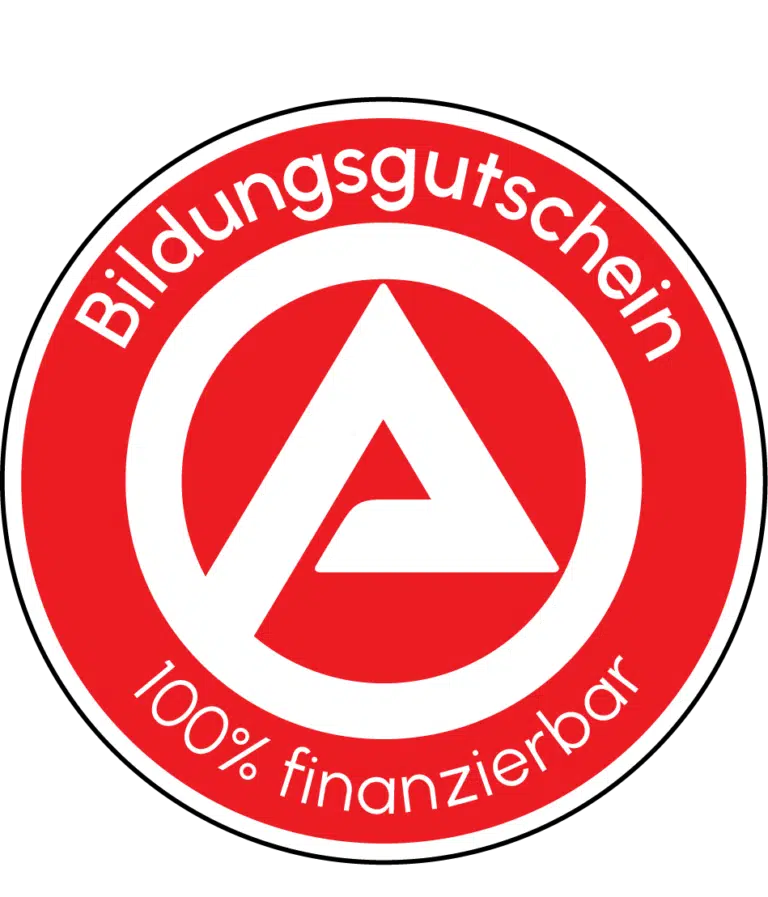Can you create an app, a website, or an automation tool without knowing how to code? Thanks to free no-code platforms, now you can. In this article, discover what no-code is, how to select the right platform, and most importantly, which free tools to try today to bring your ideas to life.
What is no-code?
Have an idea or project but lack development skills? No-code might just be the solution you’ve been waiting for.
No-code is a digital creation approach that enables you to develop websites, applications, or even automations without writing a single line of code. Thanks to visual interfaces, pre-designed blocks, and intuitive tools, you can become self-sufficient without a developer’s assistance.
It’s a revolutionary tool for entrepreneurs, freelancers, or marketing and HR managers—essentially anyone who wants to create, test, and iterate. Coding is no longer a prerequisite; instead, you only need to conceptualize your product.
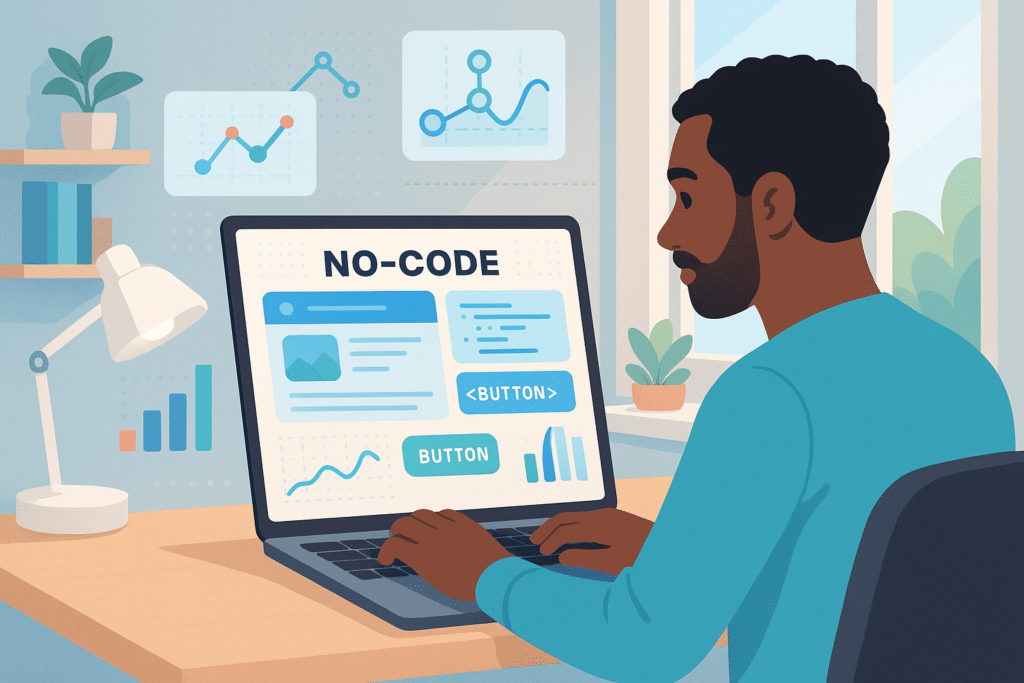
Why choose a free no-code tool?
If you’re considering whether to begin with a free version, the answer is yes—and here’s why:
- Immediate accessibility: You can test without any commitment, at your own pace.
- Reduced financial risk: Perfect if you’re launching a project in its testing phase or a side project.
- Educational: You gain experience by practicing without pressure.
- Agility: You can easily switch tools as your needs evolve.
- Rich ecosystem: Free versions often encompass the essentials for prototyping or developing an initial functional version.
The best free no-code tools to test
Here’s a comparison of free no-code platforms that we recommend, tailored to your objectives.
| Use Case | Model | Free No-Code Tools |
|---|---|---|
| Create an app | Freemium / Free | Bubble, Adalo, Glide, AppGyver |
| Automate tasks | Freemium | Zapier, Make |
| Build a website | Freemium | Webflow, Softr, Umso |
| Manage databases | Free | Airtable, Notion |
| Create a chatbot | Free / Freemium | Chatfuel, Landbot |

Examples of concrete uses of no-code
To help you imagine practical applications, here are some common examples of using no-code.
Create a professional showcase site
Want to launch a site to showcase your business or test an idea? With Webflow or Softr, you can publish a polished, responsive site featuring a contact form or a blog page in just a few hours.
Design a mobile app for an event
Organizing a trade show, training session, or seminar? With Adalo or Glide, you can create a mobile app featuring schedules, notifications, and registration capabilities—no developer necessary.
Automate marketing campaigns
Build an HR or CRM management database
Handling applications, client records, or internal projects? With Airtable or Notion, you can structure your data, create custom views, and collaborate efficiently with your teams.
How to learn no-code for free?
Want to delve into no-code without spending a dime? Good news: there are countless free resources available today that anyone can access. You just need to know where to look and what to start with.
Self-training platforms and free tutorials
Bite into the basics of no-code on online platforms, which offer clear tutorials, practical demonstrations, and often projects you can recreate. By exploring these resources, you can progress at your pace, without pressure, while getting acquainted with tools like Webflow, Airtable, Bubble, or Glide. It’s a great method to grasp the logic behind each tool and quickly delve into practical application.
Open source no-code training
If you prefer a more open-ended approach, open source tools provide an excellent entry point. Learn by experimenting—observing how features interlink and exploring interfaces designed for non-technical profiles. Projects like GDevelop or App Inventor are both educational and comprehensive, requiring no prior knowledge.
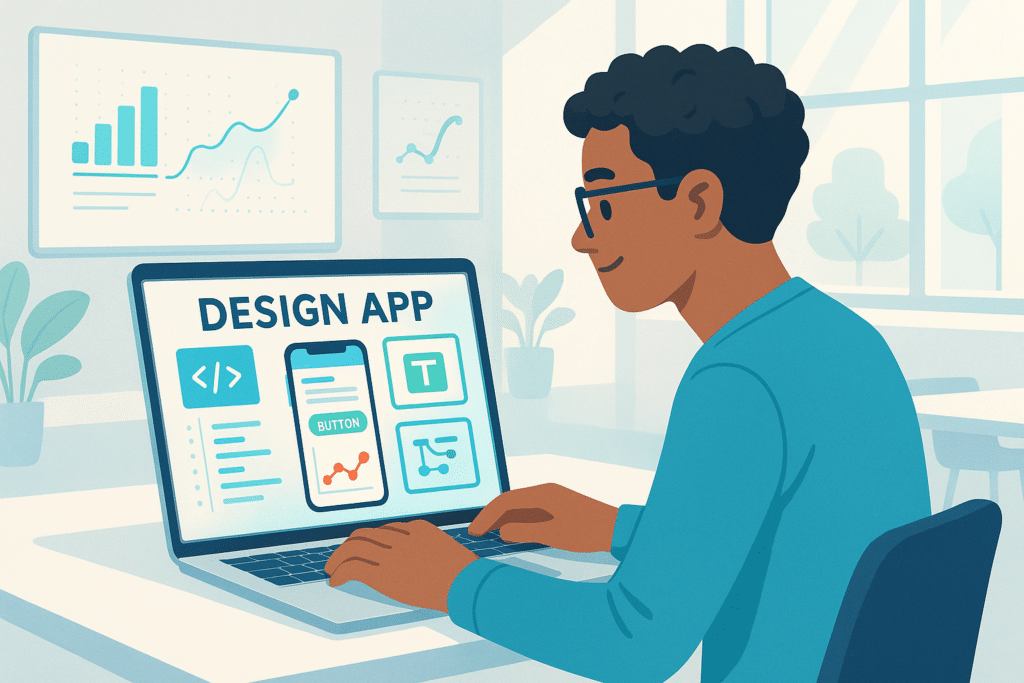
Which free no-code solution to choose?
No-code offers numerous opportunities, but not all tools are alike. To choose wisely, start by defining what you aim to create. For mobile app development, consider Glide or Adalo. For designing a professional website, Webflow offers amazing creative freedom, while Softr lets you leverage your Airtable data. If automating daily tasks is your goal, Zapier or Make will be your best bet. Selecting a tool based on your project saves time, brings clarity, and enhances efficiency.
While many tools claim to be free, it’s crucial to differentiate between genuinely free offerings and freemium versions. A free plan lets you create without restrictions, albeit with limited features. In a freemium model, you access core functionalities but might need to pay for advanced options. Open-source solutions, on the other hand, offer complete freedom but might demand more curiosity or resourcefulness.
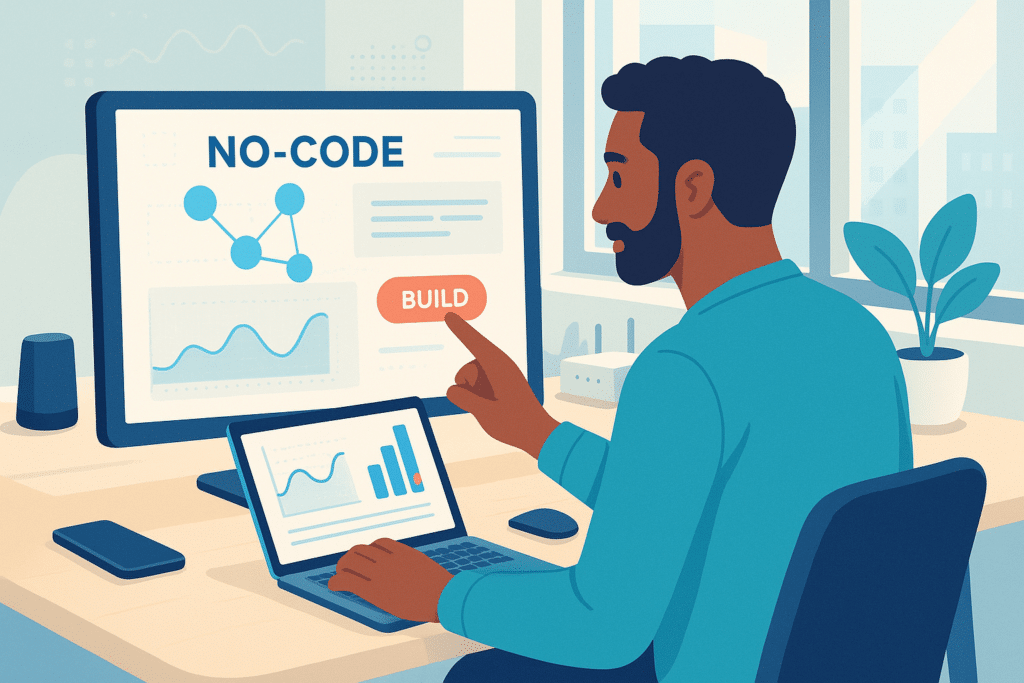
Conclusion
Free no-code platforms are more than just a trend—they’re a genuine opportunity. Whether you’re an entrepreneur, a student, or simply digitally curious, you can now bring your ideas to fruition without coding knowledge. By selecting the right tools and learning strategically, you’ll gain autonomy, speed, and agility. So don’t just watch from the sidelines: test, create, and automate. The power to build is now in your hands.

